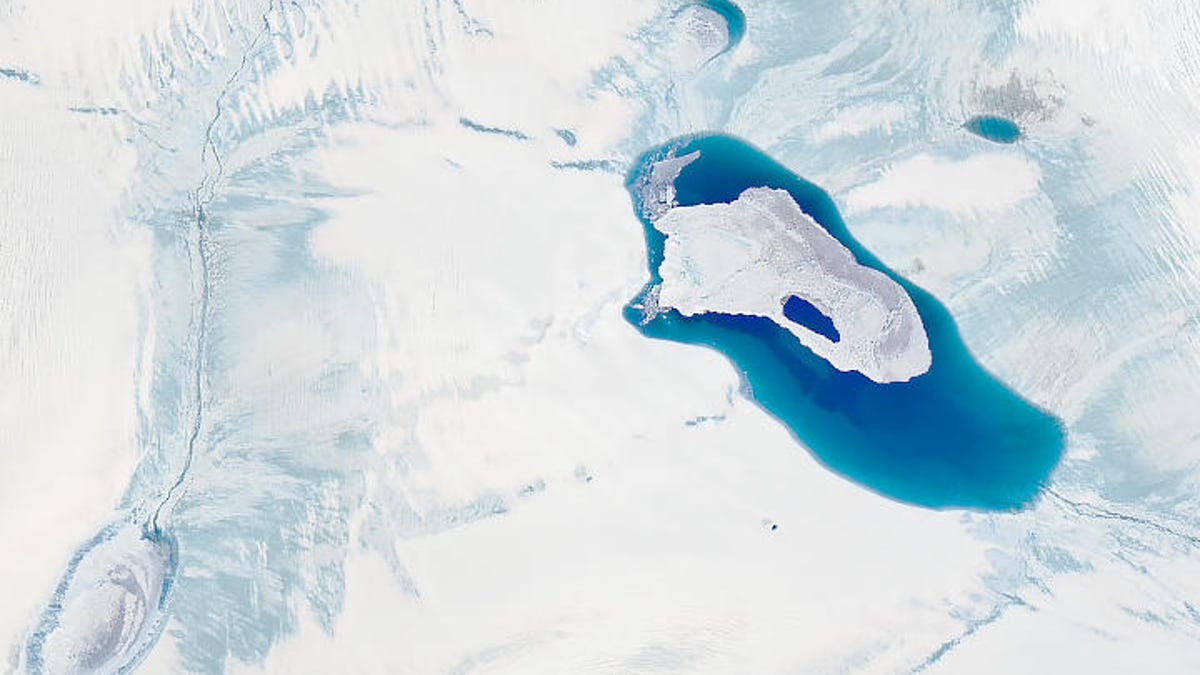Enough ice melted on Greenland this week to cover Florida in a half foot of water
A summer of rain and heat is causing yet another meltdown for one of the planet's most important reserves of ice.

This NASA Landsat 8 image shows a meltwater pond near the edge of Greenland's ice sheet.
It's been a summer of record heat in the Northern Hemisphere, which scientists say would have been virtually impossible without the effects of human-caused climate change. Records have been shattered this year along the West Coast of North America, but the latest hot spot is in the far northeast corner of the continent, where Greenland is experiencing another major melt.
The Danish Meteorological Institute, along with the nation's other Arctic research centers, report that "massive melting" is underway this week on the Greenland Ice Sheet, which covers much of the vast, frozen Danish territory.
Massive melting event in Greenland. While not as extreme as in 2019 in terms of gigatons (left image - but still would be enough to cover Florida with two inches of water), the area over which melting takes place (right image) is even a bit larger than two years ago. pic.twitter.com/rEeDIlYTA7
— Polar Portal (@PolarPortal) July 29, 2021
"After a rather rainy summer so far, stable high pressure and warmer conditions (are) bringing high melt to the Greenland Ice Sheet this week," explained Danish Meteorological Institute climate scientist Ruth Mottram on Twitter.
Mid-summer is prime time for melting on Greenland. While the current event is not as extreme as it was in 2019 in terms of the total gigatons of ice being converted to water, scientists say the total area seeing melting is larger this year and the volume "still would be enough to cover Florida with two inches (5 centimeters) of water." A gigaton is 1 billion metric tons.
Data from the Danish Meteorological Institute and Polarportal.org show that the Greenland ice sheet saw about 8 gigatons of melting on both Tuesday and Wednesday. In total, more than 26 gigatons have melted this week so far. That would easily be enough to put the Sunshine State under 6 inches of water.
The summer of 2019 saw what's considered an extreme melting event for Greenland. On Aug. 1 of that year, 11 gigatons of ice were lost in a single day. While 2021 isn't setting records on Greenland yet, it's distressing to see major melt events happening more frequently. Before 2019, the previous one was in 2012.
Greenland's ice sheet, along with those on Antarctica, are the world's biggest buffers against rising sea levels that could swamp a number of low-lying coastal cities in the decades to come if the ice sheets continue to shrink.
Follow CNET's 2021 Space Calendar to stay up to date with all the latest space news this year. You can even add it to your own Google Calendar.

